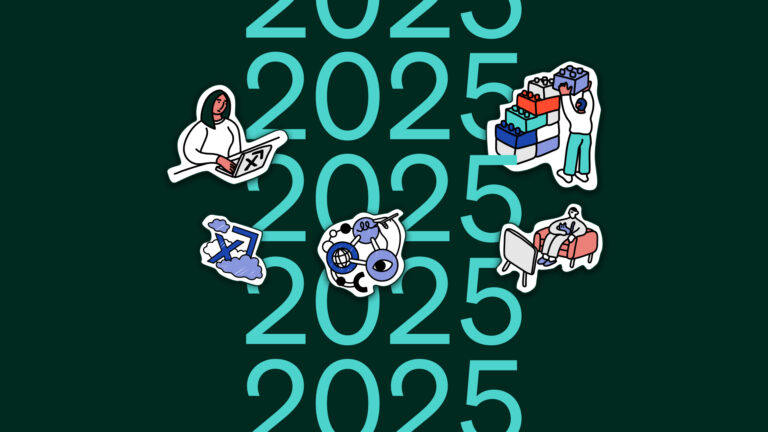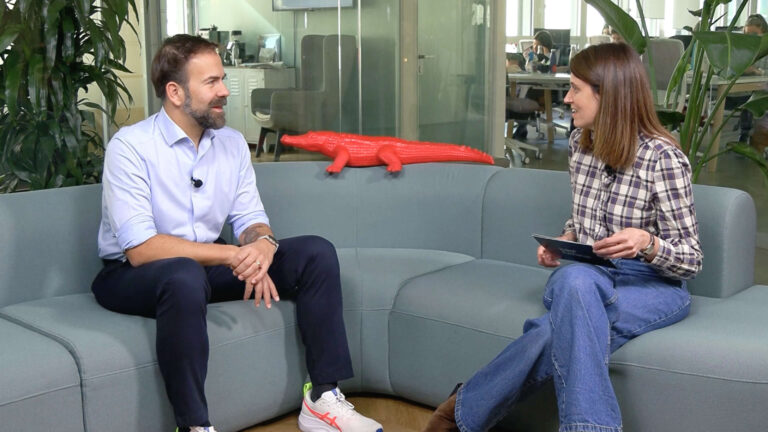Want more? Check out the Innovators Unscripted Bonus Round with Brian O’Kelley.
Scope3’s Brian O’Kelley on agentic AI
Welcome to Innovators Unscripted, a series where we share unfiltered insights from some of the most disruptive voices in today’s advertising ecosystem. Brian O’Kelley, CEO and co-founder of Scope3, joins for a conversation exploring how agentic AI and sell-side decisioning are transforming the programmatic ecosystem.
The video transcript below has been lightly edited for clarity.
What is agentic AI, and why does it represent such a breakthrough for programmatic advertising?
Brian O’Kelley: Agents, in general, are AI systems that can operate somewhat or fully autonomously. The idea is that I could train, teach, or mentor some kind of AI agent to operate on my behalf.
If you imagine doing this at scale, we could have agents that are able to do far more with less time and energy invested in figuring out all the details, levers, buttons, and checkboxes. They can just go operate and tirelessly optimize, find audiences, and do all the things we think of as the power of programmatic—but with much higher leverage on the amount of time and energy we spend managing them.
Through Index Marketplaces, you’re able to deploy agents upstream in the programmatic supply chain. Why is this so powerful?
BOK: For one thing, there’s more data closer to the publisher. Andrew Casale, who you may know, told me that there are petabytes of data that are just discarded at the SSP layer and never sent along to DSPs.
There are significant restrictions on how much of the signal, if you will, actually gets all the way out to the DSP part of the landscape.
“What we found is that we can do much more interesting and rich agentic algorithms if we operate inside Index Marketplaces.”
That translates into much more performance for the advertiser in ways that are impossible to get from the DSPs.
I think we’ve been doing a great job of both collaborating on what this could be and thinking about what it would mean to run an agent. If you think about it, we’ve all talked about AI and agents somewhat for the past say, six to 12 months, but the idea of actually deploying an agent in the bidstream has never really happened.
That took a lot of work. There are still some things the teams are playing with, but I think when you actually see it go—when you’re talking about the millions of queries per second (QPS) that Index is touching—the fact that we could have agentic logic running on every one of those and outperform anything we’ve seen in programmatic before is an astonishing engineering accomplishment.
How does AI reimagine what responsible, brand-safe advertising looks like?
BOK: Well, responsible is in the eye of the beholder, first of all. Different brands will have different concepts of what they think of as responsible, safe, or suitable.
Formerly, it has been very difficult to even describe how those policies or concepts translate into the real world. The idea that I can, in my own language—in English, in my case—write very simple descriptors of my brand’s values and principles, and what we’re trying to accomplish, and have AI translate that into the actual page-by-page, post-by-post, reel-by-reel understanding is incredible.
You’re not reducing it to keywords or some kind of taxonomy structure. You’re actually looking at every piece of content through the eyes of the brand. That means the really difficult trade-offs of reach versus responsibility can be made before you spend a single dollar on media.
And because our platform is transparent, you can actually see everything that’s happening. There’s no guessing. It’s also great for publishers because they can see why or how those decisions are being made and not have to worry or run some multi-day process to figure out why a buy isn’t running. That’s really helpful from a practical media spend perspective.
Innovation in this industry doesn’t happen in a vacuum. Take our partnership as an example. We were able to build and launch something that had never been done before. How does real collaboration across the ecosystem unlock the next wave of innovation?
BOK: I’ll give you a very tangible example.
We were talking to a large DSP about how we could get more of our agentic logic to run, and we had an idea that maybe we could push some of the signal through the upstream SSP layer.
So I texted Andrew and said, “Hey, is this a terrible idea?” He said, “I don’t know, maybe. Let’s get on the phone and talk about it.” We did a call with Mike McNeely, who runs product at Index, and we were all kind of like, yeah, this is actually kind of smart.
We then reached back out to the DSP and said, “This is possible. Let’s try it.” That entire cycle took about a week, and it was only because Mike was on vacation. I think it would have happened the next day otherwise.
It’s not just that we’re collaborating and innovating—it’s that we can do it really quickly. And then we’re all talking to the same folks: the brands, the agencies, the DSPs, the publishers. We’re all looking at ways to put the pieces together.
“It’s both faster and more collaborative, and we’re problem-solving almost in real time. It’s a testament to what this industry is supposed to be—it’s real-time building.”
Agentic AI and sell-side decisioning are transformative for programmatic. We’re still in the early days, but what kind of progress and results have you seen so far?
BOK: The idea of sell-side decisioning is to put more of the logic closer to the transaction. I think this is a trend beyond just the advertising industry.
We see this in databases—for example, Snowflake has said, don’t move your data, move the logic to the data, because data is big and algorithms are relatively small. Moving more of the decisioning logic closer to supply means you have richer data and can make better decisions than you can with less signal and data at the very end.
“We’ve run tests with Index in multiple markets, and the results have been significantly better than even we expected—20% to 50% performance improvements on effectively the same campaign.”
Everything else was the same, except that we put more logic into the SSP layer, and you just get better results.
There’s an interesting tension for the industry where you have years of investment in DSPs—we don’t want to lose that. But if we can make it perform better, that’s a huge advancement on something that’s already functioning. I love the fact that we’re building on top of something that’s working.
What’s next? If this is chapter one for agentic AI, what does chapter two look like?
BOK: Chapter one for me was, can we even make it work at all? Do the pipes even possibly work?
I think step two now is to come up with use cases and case studies that really demonstrate the power and possibility. That really means chapter two is: take existing problems and do them better with agentic.
We started with things like brand safety, where we can demonstrably do brand safety and suitability better. We did a pilot last month and were about three times better than legacy brand safety companies, which is pretty exciting. The power of AI is massive.
So chapter two is doing the same thing, but way better. Chapter three is doing new stuff that was never possible before. We’re starting to play with that and see the frontier. That’s really exciting.
That will probably be the next 12 months. We weren’t talking about agentic last year. When we’re back here next year, we won’t be talking about agentic in the same way. We’ll be talking about the next generation of what agents have made possible, which is exciting.
I’m not even sure what that looks like. I have a little sense of it now, but every conversation with a brand, they ask us questions we didn’t expect. It’s like, “Oh yeah, it could do that.”
Learn more about how Index Marketplaces enable sell-side decisioning and agentic AI solutions.
Back to blog






